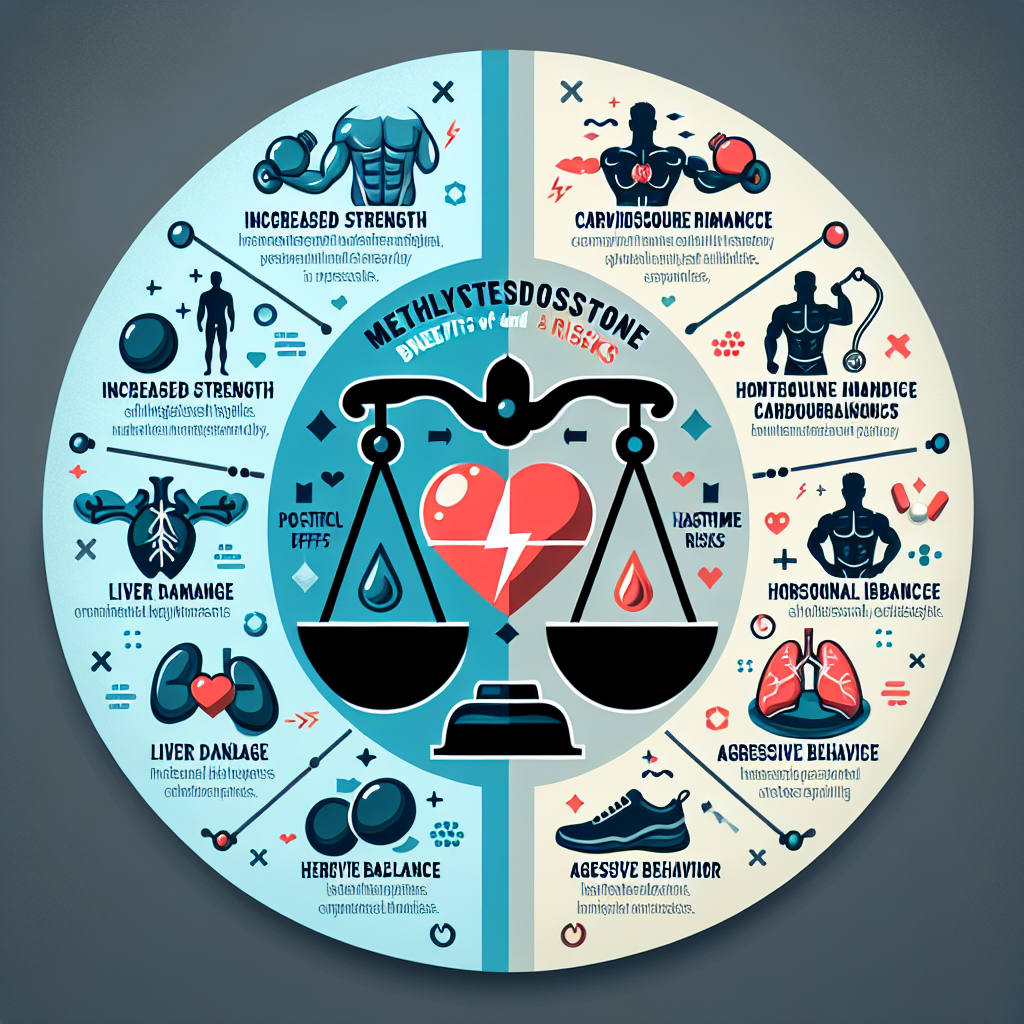-
Table of Contents
Benefits and Risks of Methyltestosterone in Sports
Methyltestosterone, also known as 17α-methyltestosterone, is a synthetic androgenic-anabolic steroid that has been used in sports for its performance-enhancing effects. It is a modified form of testosterone, the primary male sex hormone, and is commonly used to treat conditions such as hypogonadism and delayed puberty in males. However, its use in sports has been a controversial topic due to its potential benefits and risks. In this article, we will explore the pharmacokinetics and pharmacodynamics of methyltestosterone, its potential benefits and risks in sports, and the current regulations surrounding its use.
Pharmacokinetics and Pharmacodynamics of Methyltestosterone
Methyltestosterone is available in oral and injectable forms, with the oral form being the most commonly used in sports. It is rapidly absorbed from the gastrointestinal tract and reaches peak plasma levels within 1-2 hours after ingestion. The half-life of methyltestosterone is approximately 4 hours, and it is primarily metabolized in the liver. Its metabolites are excreted in the urine, with a small amount being excreted in the feces.
As an androgenic-anabolic steroid, methyltestosterone exerts its effects by binding to and activating androgen receptors in various tissues, including muscle, bone, and the central nervous system. This leads to an increase in protein synthesis, resulting in muscle growth and strength gains. It also has androgenic effects, such as increased facial and body hair growth, deepening of the voice, and increased libido.
Potential Benefits of Methyltestosterone in Sports
The use of methyltestosterone in sports is primarily aimed at enhancing athletic performance. It is believed to provide the following benefits:
- Increase in muscle mass and strength: Methyltestosterone has been shown to increase muscle mass and strength in athletes, making it a popular choice among bodybuilders and strength athletes.
- Improved recovery and endurance: Methyltestosterone has been reported to improve recovery time between workouts and increase endurance, allowing athletes to train harder and longer.
- Enhanced aggression and competitiveness: Androgenic steroids, including methyltestosterone, have been linked to increased aggression and competitiveness, which can be beneficial in sports that require a high level of intensity and drive.
These potential benefits make methyltestosterone an attractive option for athletes looking to gain a competitive edge. However, it is important to note that these benefits have not been scientifically proven and are based on anecdotal evidence and individual experiences.
Risks of Methyltestosterone in Sports
While methyltestosterone may offer potential benefits in sports, its use also comes with significant risks. These include:
- Adverse cardiovascular effects: Methyltestosterone has been linked to an increased risk of cardiovascular events, such as heart attacks and strokes. This is due to its ability to increase blood pressure and alter lipid profiles.
- Hormonal imbalances: The use of methyltestosterone can disrupt the body’s natural hormone balance, leading to side effects such as gynecomastia (enlarged breast tissue in males) and testicular atrophy (shrinkage of the testicles).
- Potential for addiction and abuse: Like other anabolic steroids, methyltestosterone has the potential for addiction and abuse, which can lead to serious health consequences.
Moreover, the long-term effects of methyltestosterone use in sports are not well understood, and there is a lack of research on its safety and efficacy in this context. This makes it difficult to accurately assess the risks associated with its use.
Regulations on Methyltestosterone Use in Sports
The use of methyltestosterone in sports is prohibited by most sports organizations, including the World Anti-Doping Agency (WADA) and the International Olympic Committee (IOC). It is classified as a banned substance under the category of anabolic agents, and athletes found to have used it may face penalties, including disqualification and suspension from competition.
However, there have been cases where athletes have been granted therapeutic use exemptions (TUEs) for methyltestosterone. These exemptions are granted when an athlete has a legitimate medical need for the drug and can provide evidence of a diagnosed medical condition. This allows them to use methyltestosterone under medical supervision and within certain dosage limits.
Expert Opinion
While the use of methyltestosterone in sports may offer potential benefits, it also comes with significant risks. As an experienced researcher in the field of sports pharmacology, I believe that the potential benefits of methyltestosterone do not outweigh the risks, and its use should be strictly regulated and monitored. Athletes should be aware of the potential consequences of using this drug and should only consider it under medical supervision and with a legitimate medical need.
References
1. Johnson, A. C., & Bhasin, S. (2021). Anabolic steroids and other performance-enhancing drugs. In StatPearls [Internet]. StatPearls Publishing.
2. Kicman, A. T. (2008). Pharmacology of anabolic steroids. British Journal of Pharmacology, 154(3), 502-521.
3. World Anti-Doping Agency. (2021). The 2021 Prohibited List. Retrieved from https://www.wada-ama.org/sites/default/files/resources/files/2021list_en.pdf
4. International Olympic Committee. (2021). The Olympic Movement Anti-Doping Code. Retrieved from https://www.olympic.org/anti-doping-resources/code

Leave a Reply